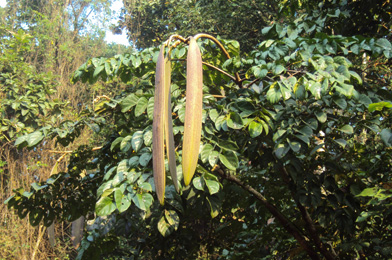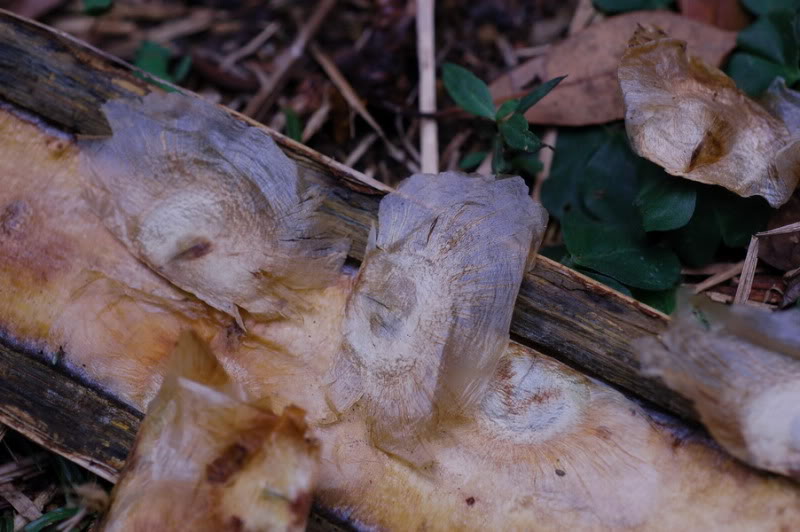1. Dry cough, noarseness, and pain and swlling of the throat, with
Sterculia
lychnophora- Pang da hai and
Cryptotympana
pustulata- Chan tui.
2. Pain due to stagnant Qi in the Liver and Stomach, with
Cyperus
rotundus- Xiang fu and
Melia azedarach-
Chuan lian zi.
[1] A Complete English Dictionary of Medicinal
Terms in Chinese Acupuncture and Herbalism 1981- Henry Lu Chinese Foundations
of Natural Health- The Academy of Oriental Heritage, Vancouver, Canada.
[2] Chinese Herbal Medicine Materia Medica- Dan Bensky and Andrew Gamble- Eastland
Press 1986 Seattle Washington ISBN 0-939616-15-7
Images
1.
planetayurveda.com
2.
hkwildlife.net
3.
hkwildlife.net
Baicalein, tetum, oroxin A and B. chysin, fatty acids.[1]
References
[1] Chinese Herbal Medicine Materia Medica- Dan Bensky and Andrew Gamble- Eastland
Press 1986 Seattle Washington ISBN 0-939616-15-7
 Oroxylum indicum. 木
蝴 蝶,
Mù hú dié,
Qian chen zi
Oroxylum,
Seed of Indian trumpet flower
Family: Bignoniaceae
Oroxylum indicum. 木
蝴 蝶,
Mù hú dié,
Qian chen zi
Oroxylum,
Seed of Indian trumpet flower
Family: Bignoniaceae

